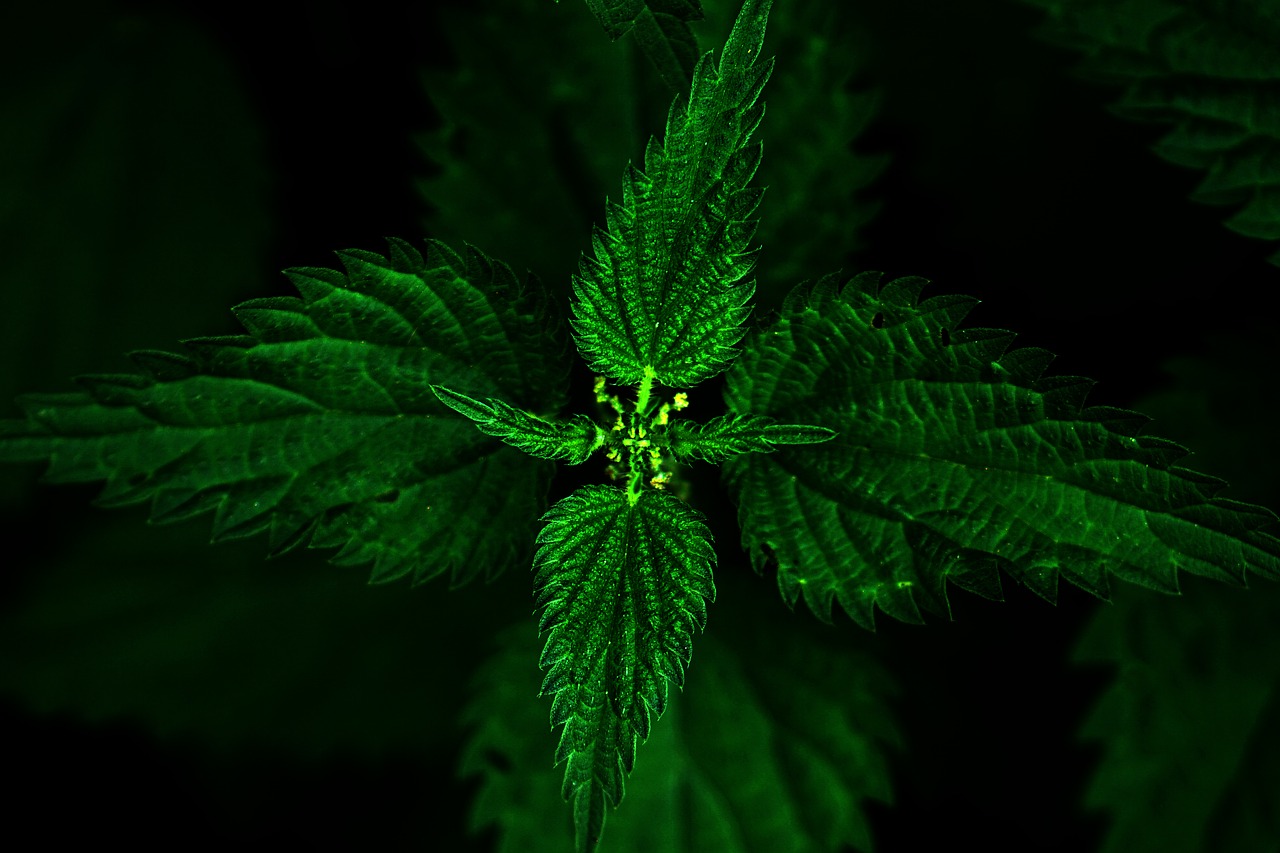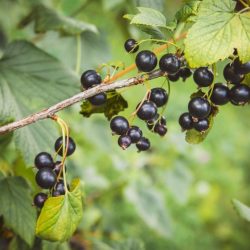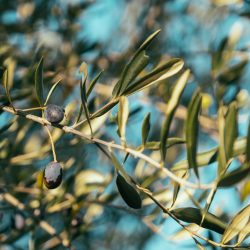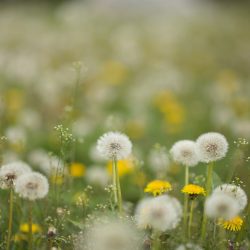The 19th-century mythologist Angelo de Gubernatis relates an interesting fact. According to him, mixing nettle seed with the bran given to hens increased egg production. What appeared to be a simple propitiatory ritual turned out to be true. It is now recognised that nettle seed stimulates hens to lay eggs. In Scandinavian countries, it makes excellent fodder, providing three cuts a year. In cows, nettle increases lactation and lipid levels in cream. This results in better quality butter. Nettle therefore significantly improves the health of both animals and humans.
What is stinging nettle?
Stinging nettle, also known as stinging nettle or common nettle, belongs to the Urticaceae family. Native to Eurasia, it is widespread throughout the world. Known for its stinging properties, it is used in food, agriculture, industry and medicine. Its unisexual flowers, either on different plants or rarely on the same plant, help us to understand sexual separation in plants. Victor Hugo highlighted its usefulness in “Les Misérables”, praising it as a source of food, fibre and fodder.
The plant, which generally measures between 90 cm and 2.7 m, forms stands thanks to its long rhizomes. All its organs are covered in soft, stinging hairs. The density of these hairs varies according to exposure to external aggression. The quadrangular stems and dark green, oval to lanceolate leaves have strong triangular teeth. The rhizomes contain various beneficial compounds.
Common in North America and more common in Northern Europe, the stinging nettle prefers nutrient-rich soil. It often thrives on wasteland, meadows and near dwellings. It uses sexual reproduction to colonise new sites, subsequently forming unisexual clonal populations by vegetative propagation.
Stinging nettle is not considered to be a species of concern in terms of threats. In phytotherapy, its dried leaves and roots are used to treat a variety of ailments, including urinary and arthritic disorders. These same parts of the plant are also used to reduce sebum secretion in cases of oily skin or acne.
Nettle has traditionally been used to treat a variety of disorders, including sleep problems, loss of appetite, fatigue and allergic rhinitis. Rich in mineral salts, it is used in cosmetic products for hair and nails.
A little history
Nettles have been used by humans for centuries, leading to the discovery of their medicinal properties. The plant has been used as a “vegetable” since prehistoric times, and was consumed until at least the 16th century. Nettle thrives in places rich in nitrates and ammonia, taking advantage of this nutritional abundance. It is often found near scrap metal and helps to reduce excess iron in the soil by producing iron oxide. Containing a large amount of iron itself, nettle benefits people suffering from anaemia.
At the beginning of the nineteenth century, the medicinal use of nettle fell into decline, but unlike other plants, nettle emerged from this unfortunate impasse in the middle of the century under the impetus of Ginestet (1845), Menicucci (1846) and Cazin (1850), all of whom highlighted the haemostatic and anti-haemorrhagic properties of nettle. Then, in the 20th century, research continued unabated, quite the contrary. In 1924, M. Dobreff discovered the presence of secretin in nettles, similar to that found in spinach.
Ten years later, the work of H. Cremer revealed nettle’s fabulous ability to enrich the body with red blood cells, which immediately put it on an equal footing with spinach. Between 1929 and 1932, Wasicky found that nettle, when taken regularly, was capable of lowering blood glucose levels, which is why it can be described as an anti-diabetic. Finally, in 1935, W. Ripperger confirmed its role in the treatment of skin disorders, in particular thanks to its purifying properties.
What are the main pharmacological properties of Stinging Nettle leaves?
Stinging Nettle leaves are rich in proteins, flavonoids, minerals (calcium, potassium, silica), vitamins A and C, and phenolic acids (caffeic acid, caffeyl-malic acid, chlorogenic acid). They also contain scopoletol and sitosterol, as well as glycoproteins, lipids, sugars and free amino acids. Nettle roots contain polysaccharides, a lectin, numerous phenolic compounds, lignans and sterols such as sitosterol.
The stinging action is due to the liquid in the base of the hairs, comprising formic acids, histamine, acetylcholine, serotonin and leukotrienes. This causes pruritus, erythema and a burning sensation. Despite its stinging nature, nettle is harmless and even beneficial to health.
Common phytotherapeutic preparations include dry powder, dry extract, infusions, decoctions and fresh juices. The active ingredient content of the leaves and roots varies according to the stage of development of the plant and the place and season of harvest. The leaves, richer in active ingredients than the stems, have anti-inflammatory properties. The roots, with their lectins, tannins, glycans and lignans, have oestrogenic properties that may be useful in treating prostate problems.
Anti-inflammatory properties
Urtica dioica leaf extracts are known to inhibit the biosynthesis of enzymes in the arachidonic cascade, in particular the cyclooxygenases COX-1 and COX-2. This action blocks the production of prostaglandins and thromboxane, which play a key role in the development of joint pain. In vitro studies have revealed that nettle reduces the expression of metalloproteinases MMP1, MMP3 and MMP9 on human chondrocytes, which are implicated in joint pain.
The effectiveness of nettle is amplified when it is combined with a non-steroidal anti-inflammatory drug (NSAID). This combination reinforces the inhibition of prostaglandin synthesis by NSAIDs, thanks to the inhibition of transcription of nuclear factor kappa B (NF-kB).
In addition to its anti-inflammatory action, nettle has potential in the treatment of chronic rheumatic diseases such as rheumatoid arthritis.Caffeic acid derivatives and hydroalcoholic nettle extracts inhibit the biosynthesis of arachidonic acid metabolites, leukotrienes and prostaglandins, with a partial effect on the synthesis of 5-lipooxygenase and leukotriene B4.
Nettle also acts on TNF-α (Tumor Necrosis Factor) and interleukin-1β produced by chondrocytes, and has an inhibitory effect on PAF (Platelet Activating Factor) produced by neutrophils. An ex vivo in vitro study confirmed the reduction in the secretion of pro-inflammatory cytokines. Nettle prevents degradation of the Ikappa-Bα subunit, thereby inhibiting NF-kappaB activation and the promotion of inflammatory genes.
A 2013 study revealed that the beneficial effects of nettle on inflammatory diseases and rheumatoid arthritis come from caffeic acid, flavonoids, polyphenols and a high silicon content. Silicon repairs elastin in the tissues and encourages the binding of elements that are essential for joint repair. It also counteracts the action of elastase, helping to combat the effects of inflammation.
Analgesic properties
Aqueous and hydroalcoholic extracts of nettle leaf have been shown in vivo to significantly reduce the nociceptive response in a dose-dependent manner. They have a depressant effect on the central nervous system, increasing resistance to pain. Flavonoids,caffeoyl-malic acid and caffeic acid are thought to be responsible for these analgesic properties.
In addition to its role in the treatment of rheumatic diseases through its anti-inflammatory action, nettle also relieves pain. It is particularly effective in cases of osteoarthritis. The application of fresh nettle leaves, a traditional revulsive, has proved effective in the treatment of a variety of painful conditions. These include osteoarthritis, lower back pain, sciatica, chronic tendonitis and sprains. There are no major risks associated with this application, except in cases of allergy to the plant.
Studies on rats and mice have shown that administration of aqueous leaf extracts reduces their motility and has an analgesic effect by reducing sensitivity to pain. Local application to the heated rat tail confirmed this effect. The mechanism of this analgesic effect is linked to the impact on the arachidonic cascade, although further research is needed for a complete understanding.
Several clinical studies have examined the analgesic effect of nettle:
- Study by Ramm and Hansen (1995 ): 152 patients took 1.54 g of dry extract of Urtica dioica leaves per day for 3 weeks, resulting in a subjective improvement in rheumatic symptoms in 70% of subjects.
- Study by Chrubasik et al (1997 ): in 40 patients suffering from acute arthritis, the combination of diclofenac with Urtica dioica leaves showed comparable efficacy to a higher dose of diclofenac alone.
- Study by Randall et al (2008): in the treatment of chronic knee pain, the application of Urtica dioica leaves reduced pain to a greater extent than placebo.
Immunomodulating and anti-cancer properties
Nettle leaves inhibit the activation of T lymphocytes, linked to the development of rheumatoid arthritis. In vitro studies indicate that nettle maintains an immature state of dendritic cells and reduces the expression of co-stimulatory molecules necessary for T lymphocyte activation.
A 2016 in vitro study revealed that caffeic acid and caffeoyl malic acid from nettle have antiproliferative and apoptotic effects on cerebral glioblastoma cells. These effects vary according to dose and time. In 2003, another study highlighted the immunomodulatory activity of the flavonoid fraction of nettle. This fraction includes quercetin rutinoside, kaempherol rutinoside and isorhamnetin-3-O-glucoside. These flavonoids stimulate lymphocyte proliferation and inhibit the production of NO (nitric oxide). They therefore contribute to nettle’s anti-inflammatory and immunostimulant effects.
Gulsel Kavalali has shown that the aqueous extract of Urtica dioïca acts on leukaemia cells in mice. It is also highly active in myeloma cultures. In addition, Durak demonstrated theadenosine deaminase inhibitory activity of an aqueous leaf extract on the prostate tissue of prostate cancer patients . These discoveries suggest a potential for the development of new cancertherapies.
Compounds have been isolated from the methanolic extract of the aerial parts of Urtica dioïca. Among them, quercetin-3-O-rutinoside, kaempherol-3-O-rutinoside and isorhamnetin-3-O-glucoside were identified. These compounds demonstrated significant immunostimulant activity. In addition, the aqueous extract of Urtica dioïca stimulates the proliferation of T lymphocytes. It also reduces NO production in macrophages. These results indicate a potential immunostimulatory effect of the extract.
Their eupeptic effect, slightly astringent thanks to the tannins, improves intestinal absorption and could prevent chronic colon diseases. Finally, nettle’s antimicrobial properties are effective against several pathogens, including Streptococcus faecalis and Escherichia coli, suggesting a potentially prophylactic use.
Antioxidant properties
In vitro studies have shown that stinging nettle has significant antioxidant power. This is due to its ability to release hydrogen ions, chelate iron and capture hydrogen peroxides. In vivo, a study revealed that nettle reduces lipid peroxidation. It also increases the activity of the antioxidant defence system. It therefore offers protection against hepatotoxicity. These effects are mainly due to the presence of phenolic compounds in the plant.
A study carried out on Wistar rats showed that a complementary diet based on nettle, combined with physical activity such as swimming, protected their brains. The diet reduced levels of reactive oxygen species and increased DNA binding activity by NF-kappa B.
Aqueous nettle extract (ATE) has antioxidant, antimicrobial, anti-ulcer and analgesic properties. The antioxidant properties of EAO (aqueous nettle extract) have been evaluated by various tests. These tests include reducing power, the ability to trap free radicals, superoxide anions, hydrogen peroxide and metal chelation activity. Concentrations of 50, 100 and 250 microgrammes of EAO inhibited 39, 66 and 98% of the peroxidation of linoleic acid emulsion, respectively. These results surpass the 30% inhibition achieved with 60 micrograms/ml alpha tocopherol.
EAO also showed antimicrobial activity against nine micro-organisms. It also has effective anti-ulcer activity against ethanol-induced ulcers. It has a notable analgesic effect on acetic acid-induced stretching. The total phenolic compounds in EAO were identified as pyrocatechol equivalents. This confirms its antioxidant potential compared with standard antioxidants such as butylated hydroxyanisole (BHA), butylated hydroxytoluene (BHT), quercetin and alpha tocopherol.
Anti-allergic properties
In the case of allergic rhinitis, a randomised, double-blind, placebo-controlled clinical study showed that administration of stinging nettle improved symptoms after just one week’s treatment.
An in vitro study revealed that the anti-inflammatory effect of stinging nettle (U. dioica) involves the inactivation of histamine H1 receptors. It also inhibits tryptase, a crucial enzyme in mast cell degranulation. Nettle has the ability to inhibit enzymes important in the formation of prostaglandins. These enzymes include COX-1, COX-2 and haematopoietic prostaglandin D2 synthase (HPGDS).
Nettle plays a key role in seasonal allergies. It blocks several inflammatory events. It acts as an antagonist of the histamine H1 receptor. It also inhibits mast cell tryptase. This action reduces the release of pro-inflammatory mediators. These mediators are responsible for hay fever symptoms such as sneezing, watery eyes, itching and nasal congestion. There is also inhibition of the HPGDS enzyme. This enzyme plays an essential role in the inflammatory pathway for the synthesis of prostaglandin D2. This underlines the importance of nettle in the treatment of allergic diseases.
In 1990, Mittman conducted a randomised double-blind study on 88 patients. This study compared the effects of a freeze-dried preparation of Urtica dioïca with a placebo for allergic rhinitis. Of the participants, 69 completed the study. It was based on a daily assessment of symptoms and overall response after one week’s treatment. The results showed that the Urtica dioïca preparation was more effective than the placebo in relieving the symptoms of allergic rhinitis.
In a 2013 study by Sayin et al, the aim was to measure the prevalence of herbal treatments for allergic rhinitis. Of the 230 patients included, 37.3% reported using natural herbal products, including nettle (Urtica dioïca), to relieve their symptoms.
Hypoglycaemic properties
A 2009 study confirmed nettle’s insulin-mimetic effect in vitro. It highlighted its hypoglycaemic impact, due to the reduction in intestinal absorption of glucose. This action was also demonstrated in vivo with the aqueous extract of Urtica dioica. Another study revealed that the reduction in blood sugar levels caused by leaf extracts results from an increase in insulin secretion by the islets of Langerhans in the pancreas. As far back as the Middle Ages, Avicenna mentioned the use of nettle in the treatment of diabetes.
More recent research has clarified the mechanisms of action of nettle. It acts by inhibiting α-amylase, a key pancreatic enzyme in glucose absorption, and exerts an agonist effect on PPARγ (Peroxisome Proliferator Activated Receptors), nuclear receptors involved in metabolism and adipogenesis.
Other properties
Current data on the diuretic effect of nettle are limited and its mechanism of action remains unknown. However, studies have shown that nettle promotes diuresis, increasing the elimination of chlorides and urea. As a result, practitioners use nettle to treat urination disorders. However, its use in the treatment of oedema linked to heart or kidney failure has not been established.
A study on animals revealed that injecting an aqueous extract of nettle leaves stimulates urine production. It increases sodium excretion and lowers blood pressure. This effect is not seen when the extract is administered orally.
Studies on the heart and aorta of rats have shown that aqueous nettle leaf extract has a preventive effect against arterial thrombosis and atherosclerosis. This effect results from the inhibitory action of flavonoids on platelet aggregation. Other research has revealed that nettle extract acts as a vasodilator. It stimulates the release of endothelial NO and opens potassium channels, resulting in a temporary hypotensive effect.
A study conducted on rats demonstrated the lipid-lowering and cholesterol-lowering effects of aqueous nettle extract. This research confirmed the absence of liver damage, as demonstrated by the evaluation of transaminases and LDH.
In 2006, a study by Avci et al. analysed the ethanolic and aqueous extracts of five plant species, including nettle, for their antihypercholesterolaemic and antioxidant activities. The ethanolic extracts of certain plants reduced serum cholesterol in mice. They increased HDL-cholesterol and decreased LDL-cholesterol, without causing gastric lesions.
These results suggest a potentially beneficial role for nettle in the management of urinary and cardiovascular disorders, as well as in improving the lipid profile. However, more research is needed to understand its precise mechanism of action.
What do the health authorities think?
Numerous clinical studies have evaluated the therapeutic properties of nettle, involving a large number of patients. The diuretic properties of the leaves have been the subject of at least five clinical trials involving more than 10,000 patients. Unfortunately, the absence of a placebo in these studies and the uncertain results do not provide formal proof of this diuretic effect.
Similarly, half a dozen trials on the effects of nettle root on prostate adenoma, involving more than 16,000 men, suffer from methodological weaknesses. These studies suggest efficacy, but lack conclusive scientific evidence.
A small placebo-controlled study indicates the potential efficacy of nettle leaves against allergic rhinitis. However, there are no trials to support its use to improve the appearance of hair and nails or to relieve joint pain.
Opinion of the health authorities:
- EMA: The European Medicines Agency recognises the traditional use of nettle leaves as a diuretic and for joint pain and seborrhoea. However, it does not approve the use of the root for BPH, due to a lack of conclusive evidence.
- WHO: The World Health Organisation recognises the clinical use of nettle root. It is useful for urine output problems associated with mild to moderate BPH (Benign Prostatic Hyperplasia). The WHO also recognises its traditional use as a diuretic and for rheumatic pain.
- Commission E: This body validates the use of nettle leaves to treat joint pain and urinary tract infections. It also approves the use of nettle root for minor or moderate prostate problems.
- ESCOP: It recognises the use of nettle leaves for osteoarthritis and as a diuretic for urinary tract infections. The use of the root is recognised for urinary problems linked to minor or moderate prostate disorders.
Are there any precautions to be taken when using Nettle leaves?
Nettle is contraindicated in medical situations requiring a reduction in fluid intake, particularly in cases of severe heart or kidney disease. The EMA advises against its use by pregnant or breast-feeding women. Nettle is also not recommended for children under the age of 12. The recommended duration of use varies according to the pathology: 4 weeks for rheumatic disorders and 2 to 4 weeks for urinary disorders. If symptoms persist, medical advice should be sought.
Drainage therapy with nettle is not recommended in cases of oedema following heart or kidney failure. The use of nettle is not recommended for children under the age of 12. Patients with hypertension or diabetes should consult a doctor before use. Nettle-based preparations should not be used to treat acute arthritis. Its use should also be avoided in the event of severe symptoms such as joint pain, swelling, redness, fever or aggravation of urinary symptoms.
Although no specific interactions have been identified, caution is recommended for patients taking oral anticoagulants. This is due to the high vitamin K content of nettle. The concomitant use of synthetic diuretics is also not recommended. The use of nettle during pregnancy and breast-feeding is not recommended, due to the lack of sufficient data and its potential effect on uterine activity.
No studies have evaluated the effect of nettle on the ability to drive or use machines. Rare cases of allergic reactions and gastrointestinal disorders have been reported. The frequency of these adverse reactions is not clearly established. The acute toxicity of Nettle is considered to be low, with a high LD50 in mice, thus reducing the risk of overdose at therapeutic doses.
How should Nettle leaves be taken and at what dosage?
Nettle leaves and roots are available in various forms: dried plant, dry powder capsules, and dry or liquid extracts. Nettle is sometimes used as fresh juice or as a porridge applied to the skin.
To relieve joint pain, a traditional method involves rubbing the joint with fresh nettle leaves. When using nettle as a diuretic, it is important to drink at least two litres of water a day. Men with urinary problems should always consult a doctor before using nettle root. Its use should complement medical treatment and ensure that there is no prostate cancer.
- Food supplement: In the form of dry or titrated extract, powder or capsules.
- Standardised fresh plant fluid extract: 5 to 10 ml per day in a glass of water.
- Integral suspension of fresh plant: 5 to 15 ml per day in water.
- Hydroalcoholic extract, mother tincture: 20 to 30 drops, 2 to 3 times a day in water or fruit juice, depending on the pain.
- Herbal teas: infuse 1 tablespoon of dried leaves in 150 ml of boiling water for 10 minutes, 2 to 3 cups a day.
Nettle leaves in magistral preparations of standardised extracts in liquid form (EPS)
Phytotherapeutic formulations known as Standardised Fresh Plant Extracts (SFPE) follow the Phytostandard extraction process. Pharmacologist Daniel Jean developed this process in the 1990s. Marketing of these extracts began in the early 2000s. EPS is classified as a plant medicine because of its pharmacological action. It is used as a raw material for magistral preparations in pharmacies, thereby acquiring a Marketing Authorisation (MA).
- Combination with blackcurrant 1/3 for 2/3 nettle P.A.: To combat demineralisation and asthenia, particularly in the context of low ferritin levels.
- Combination with horsetail: For problems with mineralisation (fractures, osteopenia, osteoporosis, etc.), particularly in patients with a history of hormone-dependent cancer, especially in the case of hormone therapy after breast cancer; growth dystrophy in children and adolescents; post-infectious convalescence (particularly in children), post-partum, post-traumatic convalescence.
- Combination with ginseng and milk thistle: For asthenia and osteoarthritis pain in the context of overweight,obesity, insulin resistance, metabolic syndrome or diabetes.
- Combination with scrofula and willow: To prevent rheumatoid arthritis and painful arthritis, particularly in the context of demineralisation or autoimmunity.
Sources
- Broer J. et al; Immunosuppressant effect of IDS 30, a stinging nettle leaf extract, on myeloid dendritic cells in vitro, J. Rheumatol, 2002
- Schulze-Tanzil G. et al, Effects of the antirheumatic remedy hox alpha. A new stinging nettle leaf extract on matrix metalloproteinases in human chondrocytes in vitro, Histol. Histopathol, 2002
- Chrubasik S. et al, Evidence for antirheumatic effectiveness of Herba Urticae dioicae in acute arthritis a pilot study. Phytomedicine, 1997
- Riehemann K. et al; Plant extracts from stinging nettle (Urtica dioica), an antirheumatic remedy, inhibit the proinflammatory transcription factor NF-kappaB, FEBS Lett, 1999
- Gülçin I. et al, Antioxidant, antimicrobial, anti-ulcer and analgesic activities of nettle (Urtica dioica L.), J. Ethnopharmacol, 2004
- Mittman P., Randomized, double-blind study of freeze-dried Urtica dioica in the treatment of allergic rhinitis, Planta Med, 1990
- Roschek B. et al; Nettle extract (Urtica dioica) affects key receptors and enzymes affects key receptors and enzymes associated with allergic rhinitis, Phytother. Res., 2009
- Domola M.S. et al, Insulin mimetics in Urtica dioica: structural and computational analyses of Urtica dioica extracts, Phytother. Res., 2009
- Farahpour M.R. et al, Antinociceptive and anti-inflammatory activities of hydroethanolic extract of Urtica dioica. Int J Biol Pharm Allied Sci, 2015
- Bnouham M. et al, Antihyperglycemic activity of the aqueous extract of Urtica dioica, Fitoterapia, 2003
- Degirmenci N.S car et al, Cytotoxic and Apoptotic Effects of Caffeic Acid and Caffeoyl Malic Acid on Brain Glioblastoma (U87 Mg); Bulletin of Pharmaceutical Research, 2016





